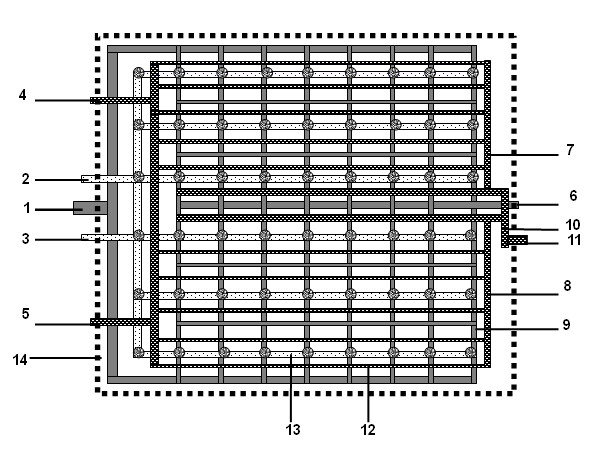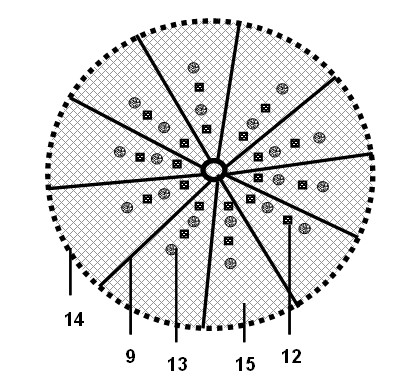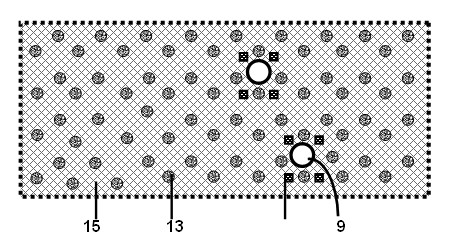Hepatic lobule-like bioreactor
A bioreactor and liver lobule technology, applied in the field of hepatic lobule-like bioreactors for artificial liver, can solve the problems of lack of bile discharge system, device structure design and effect not reaching the ideal level, material exchange efficiency is not high, etc., to achieve Good biocompatibility, good mass transfer function, and the effect of facilitating the transfer of metabolites
- Summary
- Abstract
- Description
- Claims
- Application Information
AI Technical Summary
Problems solved by technology
Method used
Image
Examples
Embodiment Construction
[0026] Such as Figure 1 to Figure 3 As shown, the hepatic lobule-like bioreactor of the present invention has a closed shell 14, and a nanofiber scaffold network 15 is arranged inside the shell 14. Intrahepatic fibrous vascular network 9, capillary biliary network 12, upper hepatic bile duct 7, lower hepatic bile duct 8, common bile duct 10, and hepatocyte collagen fiber microchannel 13 are distributed in the entire nanofiber scaffold network 15, and capillary biliary network 12 is distributed in the Around the collagen fiber microchannels of hepatocytes 13 . Wherein, the upper hepatic bile duct 7 and the lower hepatic bile duct 8 communicate through the common bile duct 10; the capillary bile duct in the capillary bile duct network 12 is provided with more than two capillary bile duct epithelial cell entrances; Entrance 2, 3. In the present invention, there may be three or more inlets for capillary bile duct epithelial cells and liver cell inlets. The intrahepatic fibrova...
PUM
 Login to View More
Login to View More Abstract
Description
Claims
Application Information
 Login to View More
Login to View More - R&D
- Intellectual Property
- Life Sciences
- Materials
- Tech Scout
- Unparalleled Data Quality
- Higher Quality Content
- 60% Fewer Hallucinations
Browse by: Latest US Patents, China's latest patents, Technical Efficacy Thesaurus, Application Domain, Technology Topic, Popular Technical Reports.
© 2025 PatSnap. All rights reserved.Legal|Privacy policy|Modern Slavery Act Transparency Statement|Sitemap|About US| Contact US: help@patsnap.com



